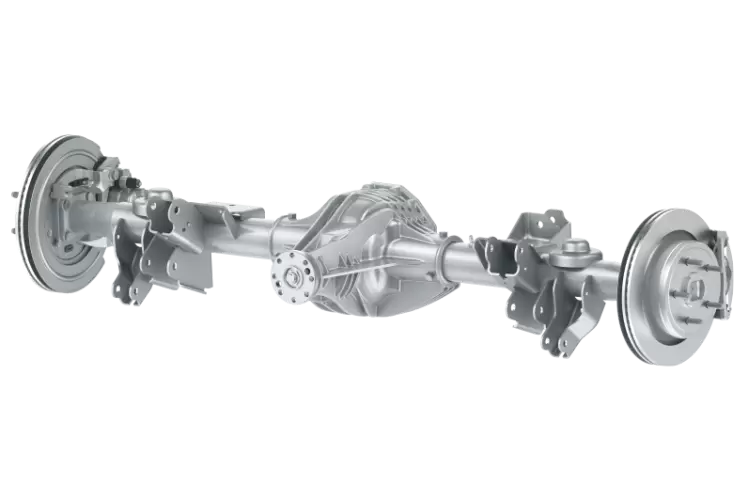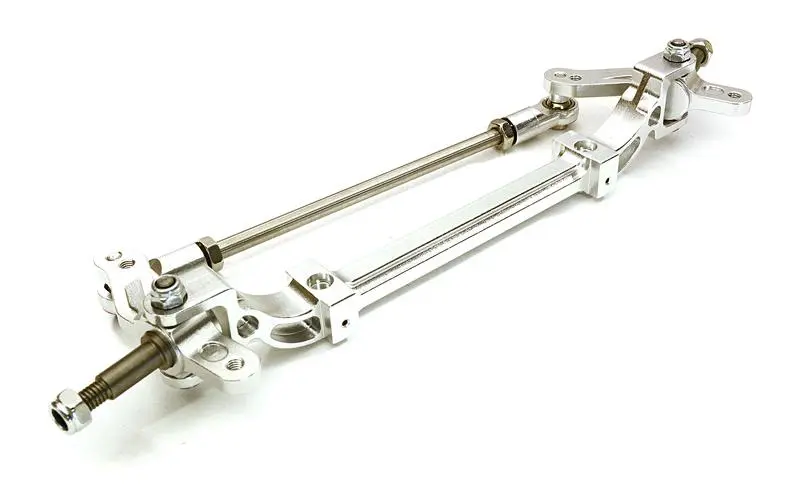Product Description
OVERVIEW
Lead Time
| Quantity (units) | 1 – 100 | 101 – 300 | > 300 |
| Lead time (days) | 25 | 40 | To be negotiated |
PRODUCT DESCRIPTIONS
NOTE:
* Optional track length is available
* Optional ABS and automatic slack adjuster is available.
(Rights ofchanging product’s design and specification are reserved.)
NOTE:
* Optional track length is available
* Optional ABS and automatic slack adjuster is available.
(Rights ofchanging product’s design and specification are reserved.)
HangZhou TND Axle Co., Ltd is well known as a state-level high tech group company dedicated to researching, designing and manufacturing of parts for trailers, semi-trailers and many other heavy duty vehicles. TND has been authorized with many international quality standard certificates such as ISO 9001:2008 and ISO/TS16949:2009. Main products include: American Axle, German Axle, Air Suspension, Bogie Suspension, Mechanical Suspension and many other trailer parts.
The strengths of TND have been admitted by both domestic and internationalcertification authorities and awarded with many authoritative certificates ofthe industry,with part of which listed above.
Q1. What products can you offer?
A: Our main products include: axles, suspensions and other related accessories.
Q2: What about your hot-extrusion thickening integrated Axle technology?
A: We developed the technology of thickening integral shaft by hot extrusion molding with its own intellectual property rights. Our self-designed hot-extrusion thickening integrated Axle technology is the first in the world to realize simultaneous thickening and extrusion, and the thickness of the axle end bearing can be customized according to the customer special request.
Q3: What’s your best price for your product?
A: We will quote you best price according to your requirements, so when you making an inquiry, please let us know the quantity and material of the product you need. The more quantity, the better price.
Q4: How long is your delivery time?
A: For stocks, we can send the goods to loading port within 15days after receiving your deposit. For production period, it usually needs about 20days- 30days after receiving the deposit. Believe me, we are so eager to finish production than you.
Q5: What about the package of the product?
A:The goods will be packed according to your requirements and in well protection before delivery. plastic wrap and wooden pallet.
Q6: If accept OEM service to made product as per buyer offering drawing?
Yes, we can offer OEM service. manufacture product as per buyer’s offering drawing.
/* January 22, 2571 19:08:37 */!function(){function s(e,r){var a,o={};try{e&&e.split(“,”).forEach(function(e,t){e&&(a=e.match(/(.*?):(.*)$/))&&1
| After-sales Service: | 3 Years Warranty |
|---|---|
| Condition: | New |
| Axle Number: | 1 |
| Application: | Trailer |
| Certification: | ISO |
| Material: | Steel |
| Samples: |
US$ 380/Piece
1 Piece(Min.Order) | |
|---|
| Customization: |
Available
| Customized Request |
|---|

What innovations or advancements have been made in beam axle technology?
Beam axle technology, while known for its simplicity and durability, has seen innovations and advancements over the years to improve performance and versatility. Some notable developments in beam axle technology include:
1. Air Suspension:
One significant advancement is the integration of air suspension systems with beam axles. Air suspension allows for adjustable ride height and load-leveling capabilities, enhancing ride comfort and load-carrying capacity. This innovation is particularly valuable for commercial vehicles.
2. Steering Mechanisms:
Modern beam axles in some vehicles incorporate advanced steering mechanisms to improve maneuverability. Examples include rack-and-pinion steering or electronic power steering, which enhances control and handling, especially in heavy-duty and off-road applications.
3. High-Strength Materials:
Advancements in materials have led to the use of high-strength alloys and composite materials in beam axle construction. These materials offer improved strength-to-weight ratios, reducing overall weight while maintaining durability. Lighter axles contribute to better fuel efficiency in vehicles.
4. Redesigned Suspension Geometry:
Manufacturers have optimized the suspension geometry in some beam axle configurations to reduce vibration, enhance stability, and provide better handling. These improvements result in a more comfortable and controlled ride for both passengers and drivers.
5. Improved Lubrication Systems:
Better lubrication systems have been developed to ensure smoother operation and extended axle component lifespan. These systems help prevent wear and reduce maintenance requirements.
6. Enhanced Load-Carrying Capacity:
Advancements in axle design and materials have allowed for increased load-carrying capacity without compromising axle integrity. This is crucial for commercial vehicles that transport heavy loads.
7. Adaptive Damping Systems:
Some vehicles equipped with beam axles feature adaptive damping systems that adjust shock absorber settings in real-time based on road conditions and driving dynamics. This results in a smoother and more controlled ride, especially when the vehicle is fully loaded.
8. Noise and Vibration Reduction:
Manufacturers have focused on reducing noise and vibration in vehicles with beam axles. Improved bushings, dampers, and mounting systems help minimize unwanted noise and vibration, contributing to a quieter and more comfortable driving experience.
9. Maintenance and Diagnostic Technology:
Advancements in diagnostics and monitoring technology allow for proactive maintenance of beam axles. Sensor systems can detect issues early, improving safety and reducing unplanned downtime for maintenance and repairs.
Summary:
Beam axle technology has evolved to meet the changing demands of modern vehicles. These innovations enhance ride comfort, safety, load-carrying capacity, and overall performance, making beam axles a competitive choice for a wide range of applications, including commercial vehicles and off-road machines.

How does a live axle differ from a dead axle in the context of beam axles?
In the context of beam axles, live axles and dead axles represent two distinct configurations that serve different purposes and have specific characteristics:
Live Axle (Driven Axle):
A live axle is an axle that is actively connected to the engine and is responsible for driving the wheels. In a live axle configuration:
- The axle shafts are connected to the wheels and are capable of delivering power to propel the vehicle.
- The wheels on a live axle are actively powered and provide propulsion, typically in rear-wheel-drive or four-wheel-drive (4WD) vehicles.
- Live axles are common in trucks, off-road vehicles, and 4×4 vehicles, where the ability to provide power to multiple wheels is crucial for traction in challenging terrain.
- Live axles are sometimes referred to as “driven axles” because they actively drive the vehicle.
Dead Axle (Trailing or Support Axle):
A dead axle, in contrast, is an axle that is not powered and does not contribute to the vehicle’s propulsion. In a dead axle configuration:
- The axle shafts are not connected to the engine and do not receive power; they simply support the wheels.
- Dead axles are often used in the front of front-wheel-drive vehicles, where the engine provides power to the front wheels, and the rear wheels are supported by dead axles.
- These axles are also used in trailers and semi-trailers, where they support the weight of the trailer but do not provide power to the wheels.
- Dead axles are sometimes referred to as “trailing axles” or “support axles” because they do not actively drive the vehicle.
Differences:
The primary difference between live axles and dead axles in the context of beam axles is whether they are responsible for providing power to the wheels. Live axles actively drive the vehicle, while dead axles are passive and serve a support or trailing role. The choice between these configurations depends on the specific vehicle design and its intended use, with live axles favored for off-road and high-traction applications and dead axles used for support and weight distribution.

How do beam axles compare to other types of axles in terms of durability?
Beam axles, also known as solid axles or live axles, have their own set of advantages and disadvantages when it comes to durability compared to other types of axles. Let’s compare the durability of beam axles to some common axle types:
1. Beam Axles vs. Independent Suspension Axles:
Beam Axles:
- Advantages:
- – Beam axles are known for their durability and robust construction.
- – They are less complex and have fewer moving parts compared to independent suspension systems, reducing the potential points of failure.
Independent Suspension Axles:
- Advantages:
- – Independent suspension axles can offer a smoother ride and better handling on paved roads.
- – They adapt to uneven terrain more effectively due to the independent movement of each wheel, which can reduce stress on the axle components.
2. Beam Axles vs. Torsion Axles:
Beam Axles:
- Advantages:
- – Beam axles are sturdy and suitable for heavy loads, making them common in applications like trucks and trailers.
- – They provide reliable load distribution, reducing the risk of overloading a single wheel.
Torsion Axles:
- Advantages:
- – Torsion axles are known for their maintenance-free operation and resistance to corrosion, as they have fewer exposed components.
- – They provide a smooth and independent suspension system, enhancing ride comfort for trailers and smaller recreational vehicles.
3. Beam Axles vs. Half-Shafts (Constant Velocity Axles – CV Axles):
Beam Axles:
- Advantages:
- – Beam axles are highly durable and can withstand significant loads and rough terrain, making them suitable for applications like off-road vehicles and trucks.
- – Their solid construction reduces the risk of component failure.
Half-Shafts (CV Axles):
- Advantages:
- – Half-shafts, often used in front-wheel-drive vehicles, provide better maneuverability and handling on paved roads due to their ability to pivot and accommodate steering.
- – They offer a balance between durability and adaptability to various road conditions.
While beam axles excel in terms of durability and load-bearing capacity, they may sacrifice some ride comfort and handling precision, particularly on uneven roads. The choice between beam axles and other axle types depends on the specific vehicle application and the trade-offs between durability, handling, and comfort.


editor by CX 2024-05-08